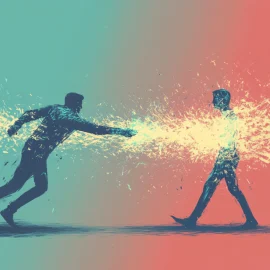

This article is an excerpt from the Shortform summary of "Brain On Fire" by Susannah Cahalan. Shortform has the world's best summaries of books you should be reading.
Like this article? Sign up for a free trial here .
What is the autoimmune encephalitis recovery process like? What are the signs of autoimmune encephalitis recovery?
Autoimmune encephalitis recovery is a long and slow process. Even after being discharged from the hospital, Susannah Cahalan did not feel like herself again.
Read more about the autoimmune encephalitis recovery process and what happened to Susannah.
Autoimmune Encephalitis Recovery
Still vastly divorced from her old self, Susannah has little self-awareness when she’s released from the hospital. The road to autoimmune encephalitis recovery will be long, with many bumps in the road.
Dr. Dalmau and other researchers are currently studying how patients recover from anti-NMDA-receptor encephalitis. When Susannah returned to work, she was in an “imprecise” stage, during which the patient is normal according to family, friends, and physicians, but not according to the patient herself. It can take as long as two or three years, even longer, to easily perform tasks that had come naturally before.
Physically Different
Stephen brings her to his sister’s house. Even through the autoimmune encephalitis recovery process, Susannah looks different. She emerges from the car and walks unsteadily down the drive, her arms stretched out stiffly in front of her, her eyes unfocused. The bald spot from her biopsy is still held together by metal staples. Her eyelids are bathed in yellow crust.
Stephen’s sisters are shocked by her appearance. His nephew is frightened. Susannah knows she’s not quite herself, but she didn’t realize that her appearance would be so upsetting to people who knew her before her illness.
In one instance, Susannah’s brother, James, is home for summer break from college. Nothing could have prepared him for his first sight of Susannah. She wobbles into the room on Stephen’s arm, dressed in oversized clothing and scratched-up glasses, her face puffy and distorted, looking like an old woman who’s lost her cane. It takes a few minutes before she even notices James. When she does, the surprise and sympathy on his face take her breath away. Until that moment, she hasn’t realized how ill she still is. “I love you,” they whisper to each other, wavering in the doorway.
Mentally Different
On another occasion, on the train platform with her mom, Susannah hears someone call her name. She ignores the voice, unsure whether it’s real or a hallucination. She hears the voice again and turns around to see an old high school friend. “How are you doing?” the friend asks. Before her illness, Susannah was a first-rate conversationalist, but today she comes up blank as she strives to find something to say. Finally, she draws out “Goooooood,” even as her mind screams at her to say something else. “Great seeing you,” her friend says, concerned, before gliding off. The autoimmune encephalitis recovery process is slow and her speech function hasn’t come back fully. Never has Susannah felt so powerless. Her mom grabs her hand and leads her to the car, away from this soul-crushing moment.
In another upsetting instance, Susannah was supposed to be a bridesmaid at her stepbrother’s wedding, but the bride believes Susannah should no longer participate in the ceremony. Shamed, Susannah decides to convince everyone she still “has it.” Grabbing onto a tangible connection to her former self, Susannah insists on drinking flute after flute of champagne, regardless of how dangerous it is to mix alcohol and antipsychotics. The champagne symbolizes independence, and everyone allows Susannah to drink for the sake of her dignity.
Susannah makes significant progress over the next few months, but her pills make her sleepy and slow, and sometimes she refuses to take them. In her own mind, she’s uncertain about herself, but she always describes herself as nearly 100 percent back.

———End of Preview———
Like what you just read? Read the rest of the world's best summary of Susannah Cahalan's "Brain On Fire" at Shortform .
Here's what you'll find in our full Brain On Fire summary :
- How a high-functioning reporter became virtually disabled within a matter of weeks
- How the author Cahalan recovered through a lengthy process and pieced together what happened to her
- How Cahalan's sickness reveals the many failures of the US healthcare system






